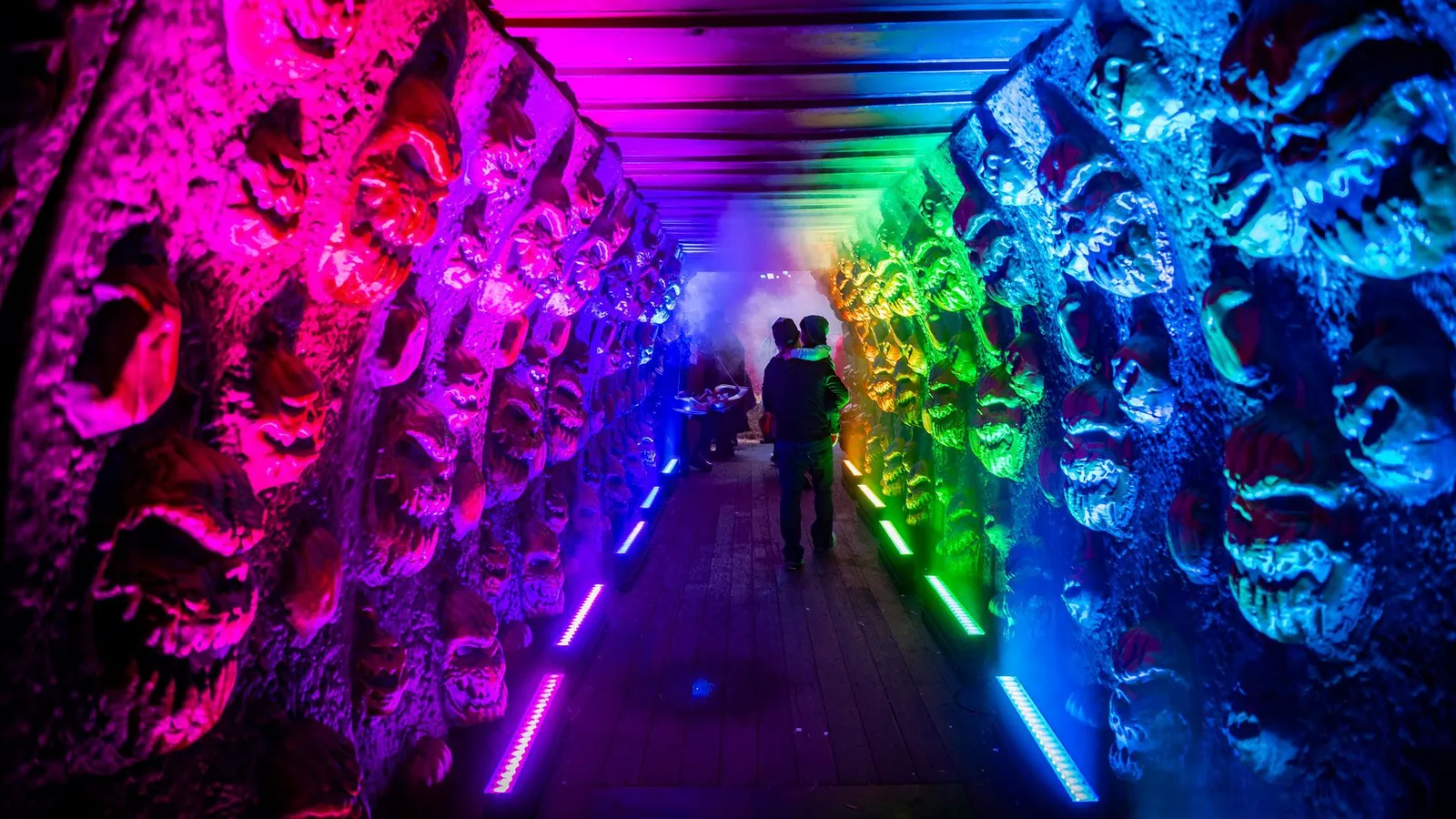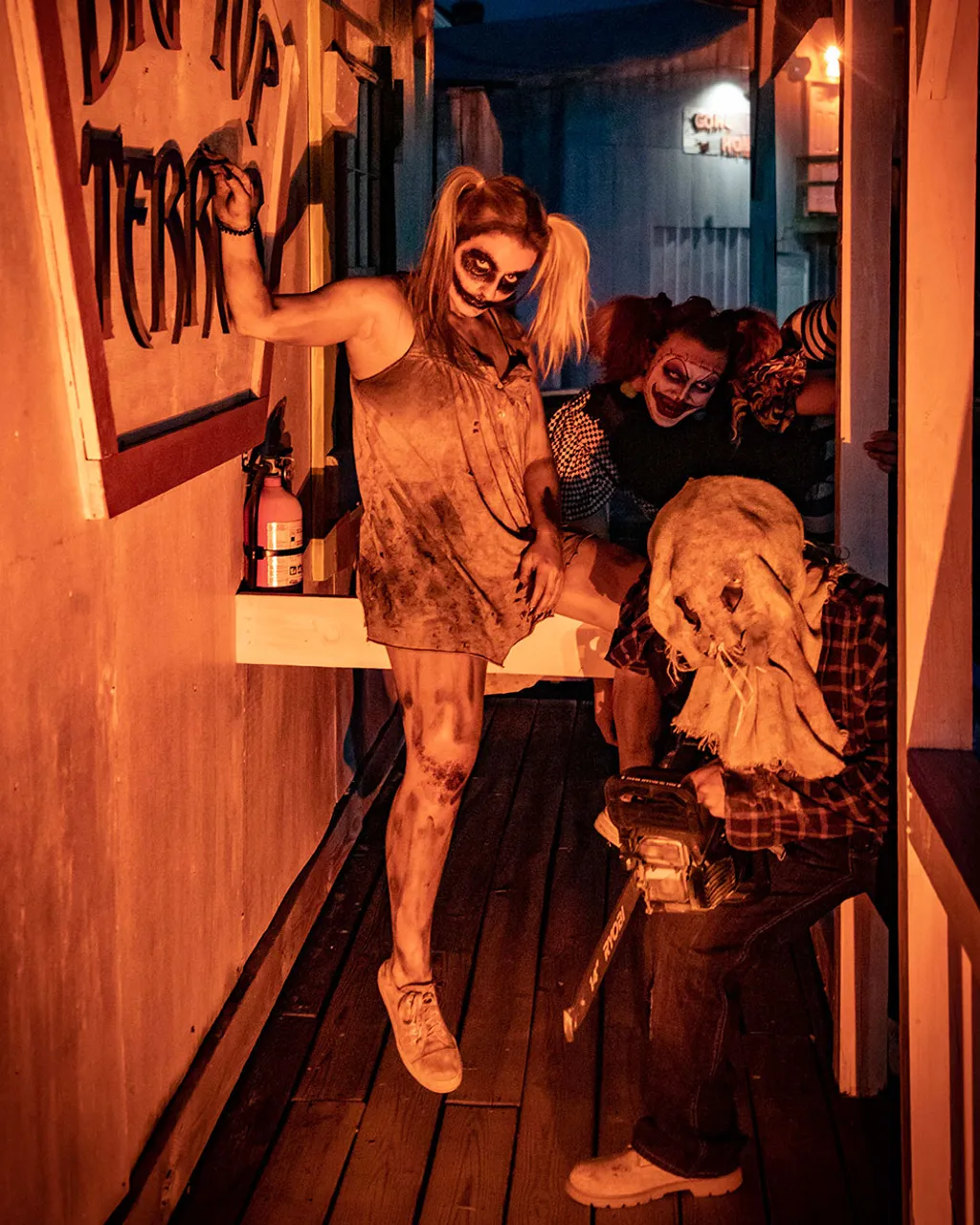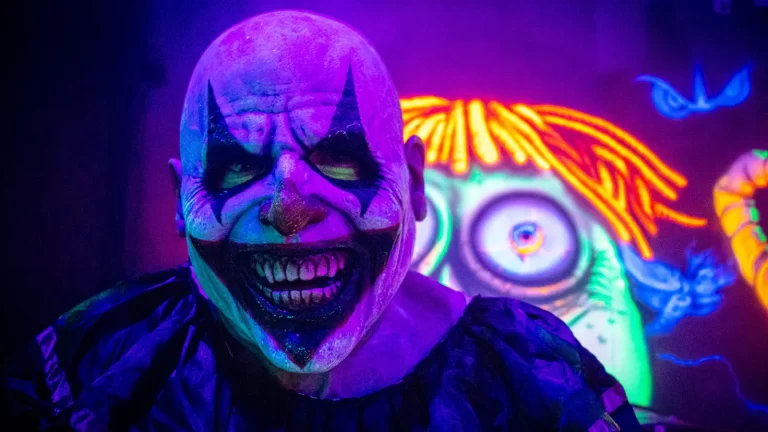Once upon a time, you could have a haunted house up and running in a day's time. Fill a bowl with grapes and call them eyeballs, add room-temperature spaghetti – those are guts – string up a few ghostly figures, crank the fog machines, lower the lights and plan a few jump scares. While it's still possible to have a spooky time on a shoestring, haunted houses are increasingly looking less like tents in primary school gyms, and more like the big-budget spectacles of theme parks, film and television productions.
“Many of the top haunted houses in the country have digital show controls and animated props that are pneumatic or electric,” says Chris Stafford, the CEO of haunted house production company Thirteenth Floor Entertainment Group, which runs 18 different haunts across the US, and even employs its own director of technology. “We're not [staging] anything nowadays that's not a seven-figure number,” says Stafford.
Along with these major productions, even local charity haunts in storied town landmarks as well as mom-and-pop farms spooking out their barns are spending five- to six-figures to stand up their attractions.
Halloween celebrations are becoming more common, especially in Europe – yet international markets don't hold a candle to the US, where the holiday is sold as whole-family fun, says Tom Arnold, a professor of finance at the University of Richmond's Robins School of Business. One of the US's biggest consumer holidays is supported by a massive haunted house industry, and entertainers are spending more and more each year.
The cost of running a haunted house
There's a long list of must-haves to run a haunted house – and these add up quickly.
First, companies need a location to host the event (if you don't already own a spot, prepare to sign a long-term lease or build your own). Next, a storyline for the spooky scenario (there are writers and consultants for that). The labour and materials to outfit your haunt with the latest lighting, tech and special effects (consider shelling out for creepy smells) will run thousands, alongside the wages for the engineers and specialists to bring it all up to code, makeup artists, costumes, prosthetics, actors, security personnel and staff (often highly specialised) to run the event. Visitors, too, must have a place to park, and maybe even transportation to bus them in. Don't forget marketing, concessions, food and alcohol, licenses and insurance.
When Jim Lorenzo, who owns Blood Manor in New York City, built his first haunted house in the early 2000s, it cost about $125,000 (£103,000). When he refreshed it a few years ago, it cost $1m (£824,000) – and Lorenzo works within existing buildings. Blood Manor keeps 125 to 135 people on staff during the Halloween season, with 60 to 95 working on any given night, including security, makeup artists, wardrobe, actors, airbrush artists, sound engineers, retail and other back-of-house folks that make the operation go. The haunt, a favourite among Manhattanites, grosses between $800,000 and $900,000 per season.
Small businesses are investing large sums, too. Michael Phillips, who owns Phillips Farms in Cary, North Carolina, says its Halloween attractions – including the Field of Lost Souls and ultra-creepy Gore House – usually take $25,000 to $50,000 to mount. He needs 70 or more people to put on the show, which sees 1,500 to 2,000 people come through every night.

Even a charity attraction, like Scare for a Cure in central Texas, spends roughly $20,000 to create their volunteer-run haunted house, says president Susan Prat. Its biggest expenses are feeding their volunteers and the cost of insurance for the whole operation. They send about 2,000 visitors through every year, and raise roughly $50,000 (£41,000) for cancer research and other local charities.
‘They've turned into three-ring circuses'
Most companies and organisations prep year-round for their events, but haunted houses are ultimately a seasonal enterprise. Relying on making all their revenue during a short window can be risky – losing even a few days can damage the business.
“We're profitable, but we're very conscientious of our expenses. We book a lot of business, but it is risky,” says Blood Manor's Lorenzo. His haunted house was forced to close for five days during Hurricane Sandy, and that made a dent in business. Covid-19, too, was a blow. “We have some years that we do very well, and we have some years that we struggle to get by.”
For the 2023 season, there's still plenty of money to be had – the National Retail Foundation expects Halloween revenue to top $12bn, and the draw of spending on the holiday is irresistible – but the outlook for this season is hazy.
Larry Kirchner, founder and CEO of immersive experiences company Blacklight Attractions, worries that inflation could scare people away. Where once owners charged a flat fee at the door, say $25 (£21) paid in cash, most are now ticketed digitally, and with taxes and service fees, those prices can increase substantially. In fact, Blacklight recently tried to raise prices on its Halloween events, but visitors were abandoning their carts once extras were calculated. Lorenzo, too, believes safety concerns amid threats of violence related to the Israel Gaza war could keep some people at home.
Yet it may not be as grim as all that. Marley Toben, a one-time haunted house actor and long-time lover of all things spooky, says she's willing to travel and pay for the best experiences. Toben estimates the farthest she's driven for a haunted house is about an hour and a half. How much would she pay? “Seventy-five dollars for a good one. If they charge more, my mind says they're worth more.”
Plus, despite being seasonal businesses, that season is getting longer. Though they used to run only in the month of October, Halloween celebrations now stretch six-to-eight weeks. The Universal Orlando theme park opened its Halloween Horror Nights on 1 September this year. Spooky celebrations are also finding their way into other holidays; many of Thirteenth Floor’s locations host events all year, like Krampus Christmas, bloody Valentine's Day and halfway-to-Halloween in the summer.
The past 20 years have been mind-blowing, says Jennifer Thaler, who runs the haunted house industry's biggest trade show, called TransWorld. “You go to a haunted house now and it's an evening, you're not just walking through a haunt. They've turned into three-ring circuses.”
As the holiday grows, so does competition, notes Kirchner, of Blacklight Attractions. “You have people building haunted houses in their subdivisions. You have haunted pop-up bars. You have people opening up elaborate pumpkin patches. Zoos do Halloween. Theme parks do Halloween. It's all over the place.”
Whatever happens this season, most companies already have their eyes set on the future – one that, for many, may look even bigger. This includes the relatively small-scale Phillips Farms. Halloween visitors used to be middle and high schoolers, but now the adults are coming in droves, says Phillips. So, next January, they'll bring in their haunted house consultant from Florida to brainstorm for an expansion, and by spring, they’ll start construction on a new building – an addition to the haunted farm. The buildout will run them between $80,000 and $200,000.

Next year could be one of their biggest seasons yet, says Phillips. “When it comes to us as a team as a whole, we can pretty much do anything you can imagine.”
— CutC by bbc.com


